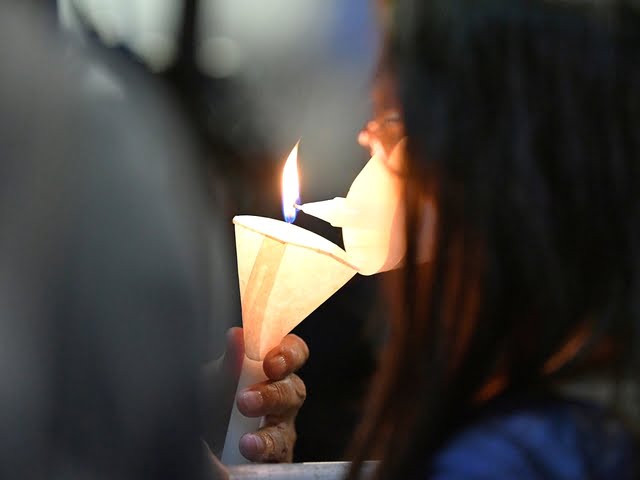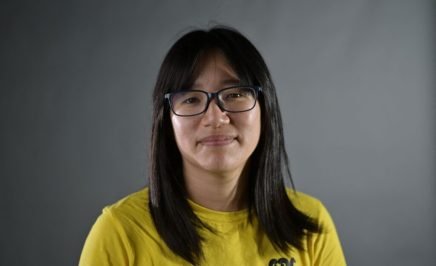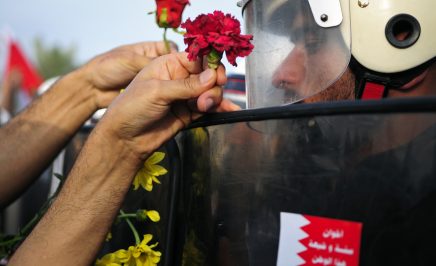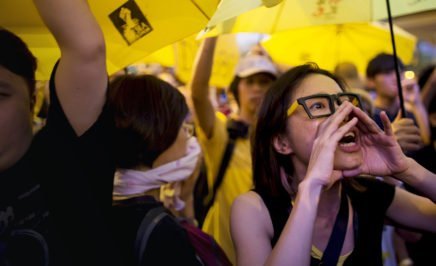What happened?
4 June, 1989 is etched into history as the day the Chinese authorities ruthlessly stamped out peaceful protest.
Chinese troops shot dead hundreds, if not thousands, of people who had taken to the streets in and around Beijing’s Tiananmen Square to call for political reforms. No one knows the true number of fatalities, as any discussion of the crackdown is heavily censored to this day.
Thirty-four years on, the right to freedom of peaceful assembly remains severely restricted in mainland China. Authorities have long characterised protests and public assemblies as “disruption to public order”, and under President Xi Jinping, curbs have grown even tighter, making expression through public protests exceedingly rare.
But some brave people still gather to speak out, despite the risk of being arrested.
Continuing injustice for protestors
Since 1989, courageous people have been imprisoned for commemorating events or questioning the official line. Human rights lawyer and activist Chow Hang-tung is one of them.
For many years, Chow Hang-tung has helped to organise a peaceful annual remembrance of the Tiananmen Square crackdown in Hong Kong. In 2021, after she posted on social media to encourage people to light candles at home, Chow Hang-tung was unjustly imprisoned in Hong Kong.
“To say I’m not afraid would be a lie. But I am not so afraid that I dare do nothing”.
Chow Hang-Tung
The Chinese government wants people to forget about this dark chapter of history – but Chow has made it her mission for everybody to remember.
Who was Tank Man?
The most famous photo of Tiananmen Square is known as “Tank Man”, it immortalised the protests in Western media on 5 June 1989.
Tank Man would not let the military vehicles pass. He succeeded. Eventually, he was pulled out of the way of danger by onlookers. But the image of unarmed man versus tank quickly came to symbolise the struggle of the Tiananmen protesters – peaceful protest met with military might.
His identity has never been confirmed.
‘It demonstrates one man’s extraordinary courage, standing up in front of a row of tanks, being prepared to sacrifice his own life for the sake of social justice’
Stuart Franklin, Tank Man photographer
The hidden history of China’s protest movement
Chinese activists have a long history of protest, post-Tiananmen, in spite of the deeply repressive environment.
- 2022: ‘White paper’ protests. In November 2022, videos shared on social media showed protests breaking out across universities and cities throughout China, including in Beijing, Guangdong, Shanghai and Wuhan. Peaceful protesters commemorated victims of the Urumqi fire and called for the easing of lockdown measures. Many also demanded censorship to end and some called for President Xi to step down.
- 2018: Jasic labour movement. In July 2018, workers at Jasic Technology, a welding-equipment manufacturer in the southern Chinese city of Shenzhen, attempted to set up a trade union. Days later, three of the workers were arrested. University students, labour rights advocates and other workers were detained or harassed for taking part in protests against the arrests. Many university Marxist groups active in the Jasic movement were eventually disbanded or forced to restructure.
- 2012-2020: New Citizens’ Movement. The New Citizens’ Movement is a loose network of Chinese activists founded by legal scholar Xu Zhiyong in 2012 to promote government transparency and expose corruption. Dozens of lawyers and activists associated with the network were targeted after attending an informal gathering held in Xiamen, a city on China’s southeast coast, in December 2019. The group, which included Xu, had met to discuss the civil society situation and current affairs in China. Later that month, police across the country began summoning or detaining participants in the Xiamen gathering. Xu and human rights lawyer Ding Jiaxi were sentenced to 14 and 12 years in prison respectively in April 2023.
- 2012-2015: Feminism movement. Since Xi Jinping came to power in 2012, the already limited space to exercise freedom of expression and freedom of peaceful assembly further diminished. It has become effectively impossible for activists and groups to mobilise mass public protests. Nevertheless, people still do it. For example, a new feminism movement emerged in 2012, known for its street actions and “atomised” women’s rights protests, sometimes involving just one person. The Chinese government has since started a systematic crackdown on the feminist movement. In 2015, five prominent members of the group were arrested and detained. Today, Chinese feminist activists continue their work with offline organising and overseas activism.
- 2011: ‘Jasmine Revolution’ pro-democracy protests. The ‘Arab Spring’ protests in the Middle East and North Africa, beginning with Tunisia’s ‘Jasmine Revolution’ in late 2010, sparked online calls for protests in China. State-affiliated media characterised the assemblies and protests as “disruption of public order” and claimed that foreign media mocked the protests as “performance art”. More than 100 activists, many of them active on Twitter and blogs, were detained, or put under surveillance or illegal house arrest. Since then, the term “performance art” has been used by activists to skirt censorship.
- 1999: Falun Gong protest in Beijing. Waves of protests broke out in Beijing against the government’s harassment of members of the spiritual movement, which had gained a large following in China during the 1990s. The Chinese government responded by outlawing the group and launching a campaign of intimidation and persecution, directed by a special organisation called the 610 Office. Tens of thousands of Falun Gong practitioners have been arbitrarily detained and many tortured since the movement was banned.
- 4 June 2023. Public commemoration, or even mention, of the Tiananmen crackdown is still banned in China. Hong Kong’s annual vigil for the victims the crackdown continued for 30 years and was attended by hundreds of thousands of the city’s residents, but this too has been banned since 2020 as repression in the city increased after the enactment of the Beijing-imposed National Security Law. And yet, people in Hong Kong, in mainland China, and across the world continue to fight for the right to freedom of assembly in China.
Peaceful protest can be ruthlessly suppressed, but it can never be completely silenced.
People power works – how you can help
No one should be in prison for demanding justice, and remembering the victims of a violent crackdown. Together, our voices are more powerful than you think – we can let the authorities know that we too, remember – and that we won’t sit by while brave people like Chow risk everything for their human rights.
When courageous people protest, they make the world a better place. We must protect the right to protest wherever it is restricted and whenever it is at risk.



